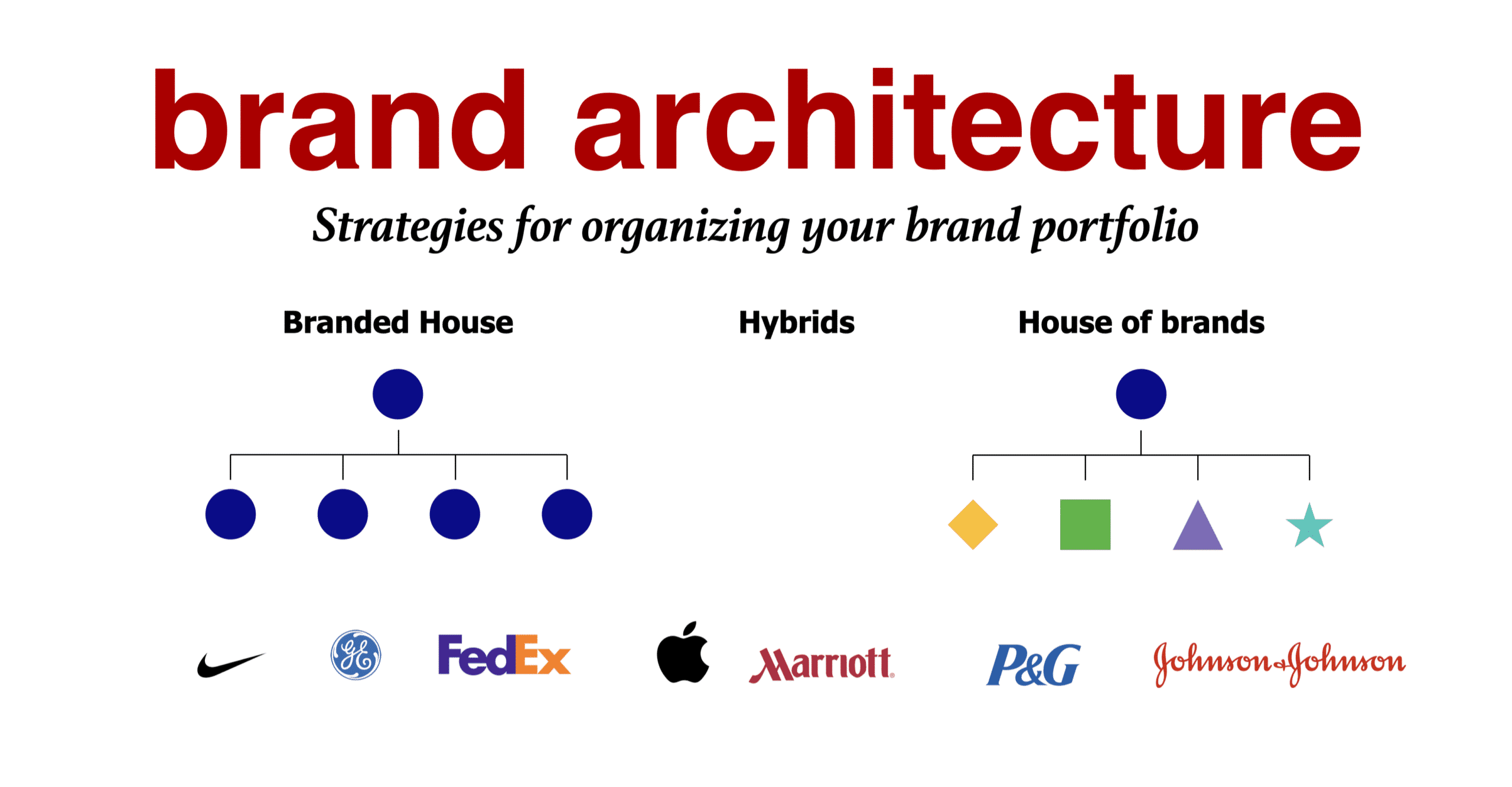
Brand Portfolio with Architecture
Any company with multiple products, services or divisions faces important decisions around how to organize and manage the relationship between their various brands. This is known as brand architecture – the system used to structure a company’s portfolio of brands. Creating a deliberate brand architecture considers how portfolio brands fit together to minimize confusion, maximize synergies and align with the company’s strategic vision.
Most companies fall into one of three primary brand architectures:
monolithic, branded house or branded portfolio. A monolithic architecture uses one umbrella brand for all products and services. This clarifies the relationship between offerings while creating a unified brand persona. However, internal divisions may become undervalued.
Conversely, a branded house architecture names each product or division after the parent company. Examples include General Motors and American Express. This highlights the company’s role as a house of brands but risks diluting the parent brand’s equity.
A branded portfolio involves giving each brand its own distinct name unrelated to the company. Think 3M, Unilever, or Anheuser-Busch InBev. This clarifies brand positioning while allowing flexibility and independent brand management. Yet synergies between brands may remain unexploited.
In reality, most companies blend elements of these architectures.
A key concept is the brand hierarchy, which arranges individual brands by their relationships and relative dominance. Options include line extensions, where a new product falls under an existing brand, and brand extensions, which leverage an established brand to enter a new category.
Companies must also decide whether brands will be endorsed
Associated with the corporate brand – or stand-alone. Endorsed sub-brands benefit from parent brand equity while stand-alone brands gain autonomy. There are also options around shared or dedicated brand elements like names, logos, colors and messaging.
Ultimately, brand architecture aims to maximize benefits while reducing overlap, dilution and cannibalization between brands. Strategic architectures clearly signal the value of each brand to different customer groups. For example, a luxury brand may be positioned separately from value brands targeting distinct market segments.
Overall, creating deliberate brand architectures require in-depth knowledge of customer needs, assessment of brand equities, and alignment to business goals. Architectures also require ongoing evaluations to ensure brands continue to complement each other as market conditions evolve. Done well, brand architecture provides an integrated framework for connecting brand strategies to business strategies.
In summary, brand architecture systems structure how companies organize, manage and differentiate the relationships between brands in portfolios. Monolithic, branded house and branded portfolio architectures represent the primary options, though hybrid models combining features are common.
